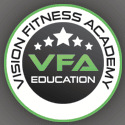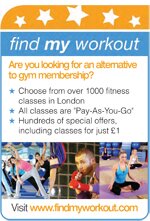The press up, also known as a push up for our American friends, is the “How To” of the day and is considered by many to be the best bodyweight exercises for building the chest muscles (pectoralis major). Press ups also target the front of the shoulders (anterior deltoids) and the back of the arms (triceps).

The press up is like a portable gym you take with you where ever you go, and a favourite amongst the home exerciser, circuit classes and outdoor training enthusiast.
How To – (classic full press up)
- Starting from a prone position (face down), arms extended and shoulder width apart
- Step back into a plank like position with the legs with the feet slightly apart whilst maintaining a strong core and don’t allow the lower back to dip.
- Breathe in and bend the elbow allowing the rib case to lower down to the floor.
- Breathe out and push back up to the start position to complete the movement.
As with the bench press covered in an earlier “How To” it is possible to focus different parts of the chest muscle. Try
- Elevating the feet to have a deeper focus on the upper portion of the chest i.e. feet on a bench
- Elevating the chest by placing the hands on a bench to further target the lower chest

Troubleshooting the press up
The full press may not be for you so taking it down a level to a box press up will hopefully progress you towards hitting a perfect ten full ones. The box variation takes away some of your bodyweight from the equation.

How to Box – using the full press to how to above replace step 2 with the below
- Rest your knees on a mat and adjust your arm distance to suit your ability the closer your arms to your legs the easier the exercise will be thus meaning the further your arms are the harder it will be.
Other variations

- Go plyometric and add a clap, the makes the press more explosive. Warning this is a tough one
- Staggered press up – using either a full or box press up position place one hand in line with your chest and the other in the normal hand position and repeat on the other side.
As always try to use mirrors when possible and seek local advice from a trainer if you feel you need a little more guidance.
Enjoy
Andreas
http://www.metrohealthandfitness.co.uk
http://www.fitnorama.com/
Popularity: 2% [?]












 Today’s “How to” is all about the Bench press. The bench press is an upper body compound exercise targeting the chest (pectoralis major), front of the shoulders (anterior deltoids) and the back of the arms (Triceps). This classic lift is one of the big three lift used in powerlifting along with the squat and deadlift and is commonly used in bodybuilding. Oh and every Monday in your local gym!
Today’s “How to” is all about the Bench press. The bench press is an upper body compound exercise targeting the chest (pectoralis major), front of the shoulders (anterior deltoids) and the back of the arms (Triceps). This classic lift is one of the big three lift used in powerlifting along with the squat and deadlift and is commonly used in bodybuilding. Oh and every Monday in your local gym! Pay attention to your hand grip; always have a firm secure grip with the thumb opposite the fingers and never allow the fingers to point when you push the weight up on the return phase.
Pay attention to your hand grip; always have a firm secure grip with the thumb opposite the fingers and never allow the fingers to point when you push the weight up on the return phase. 






